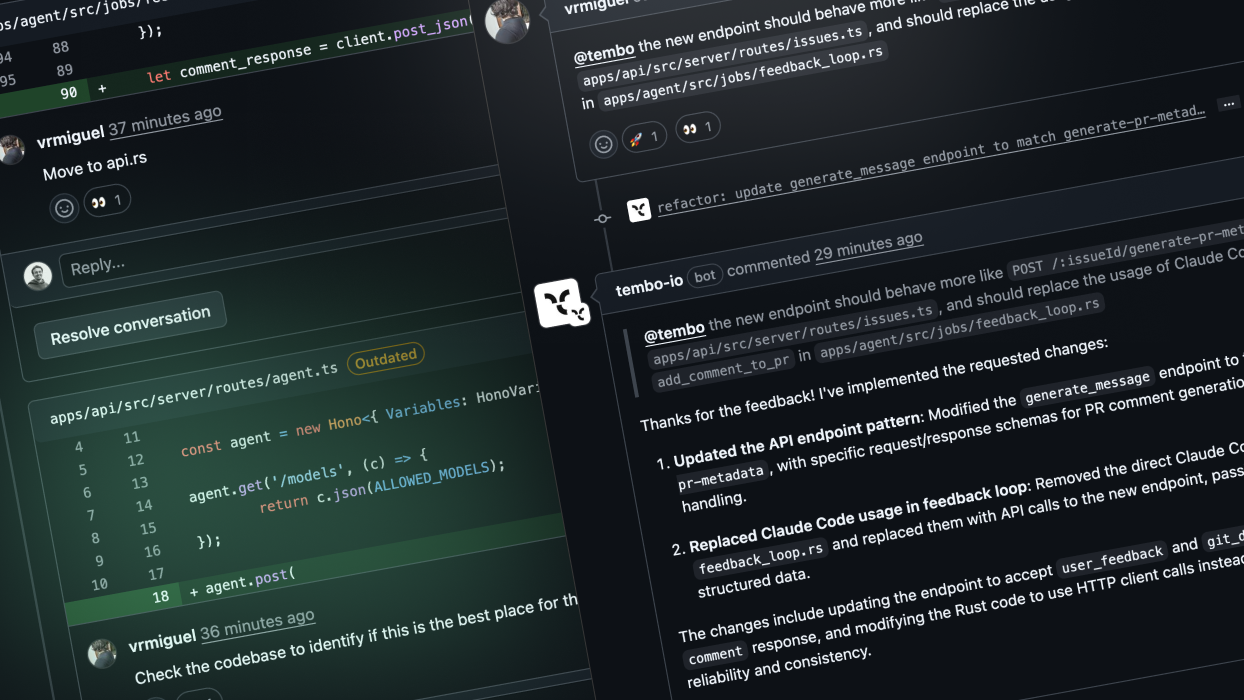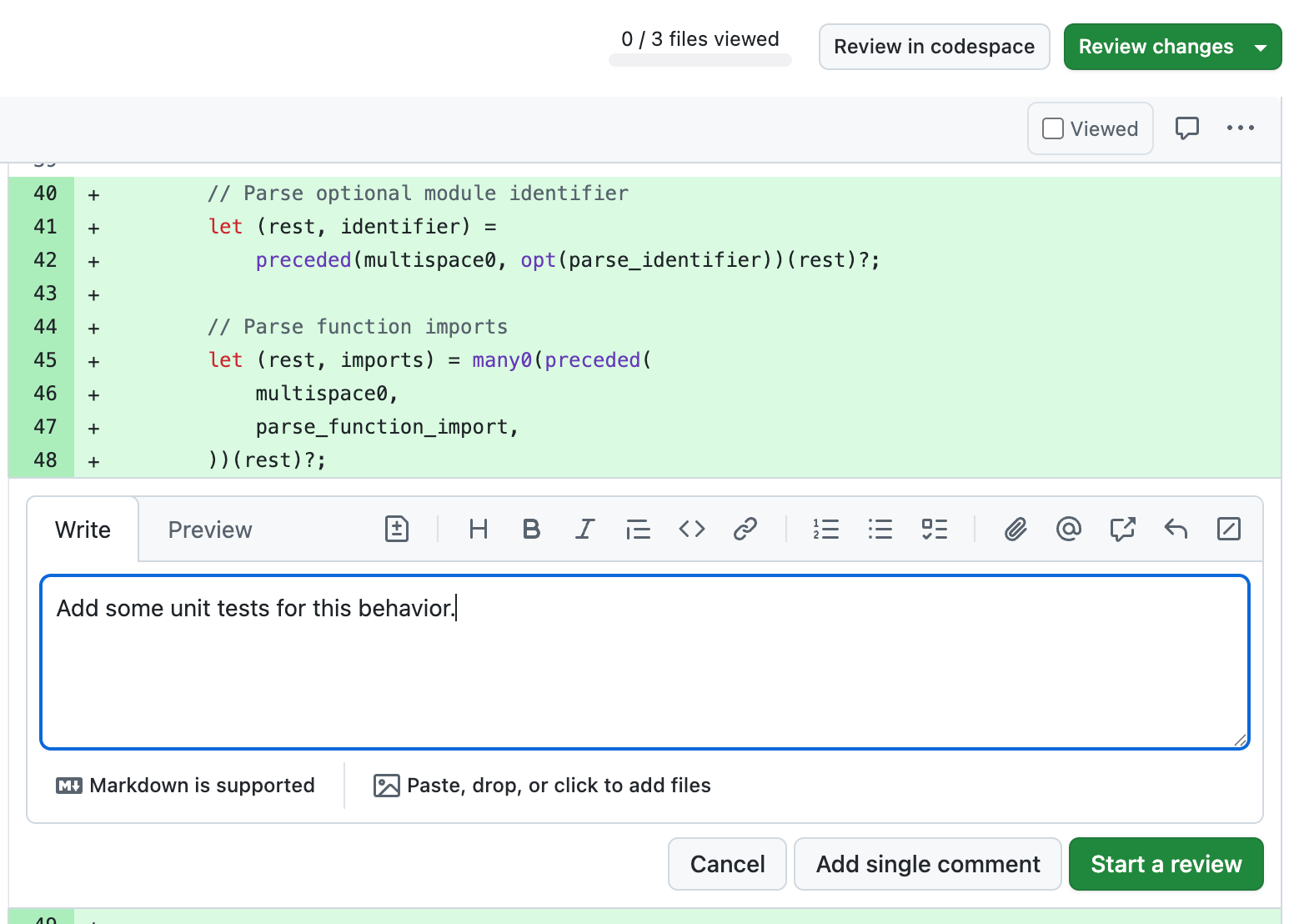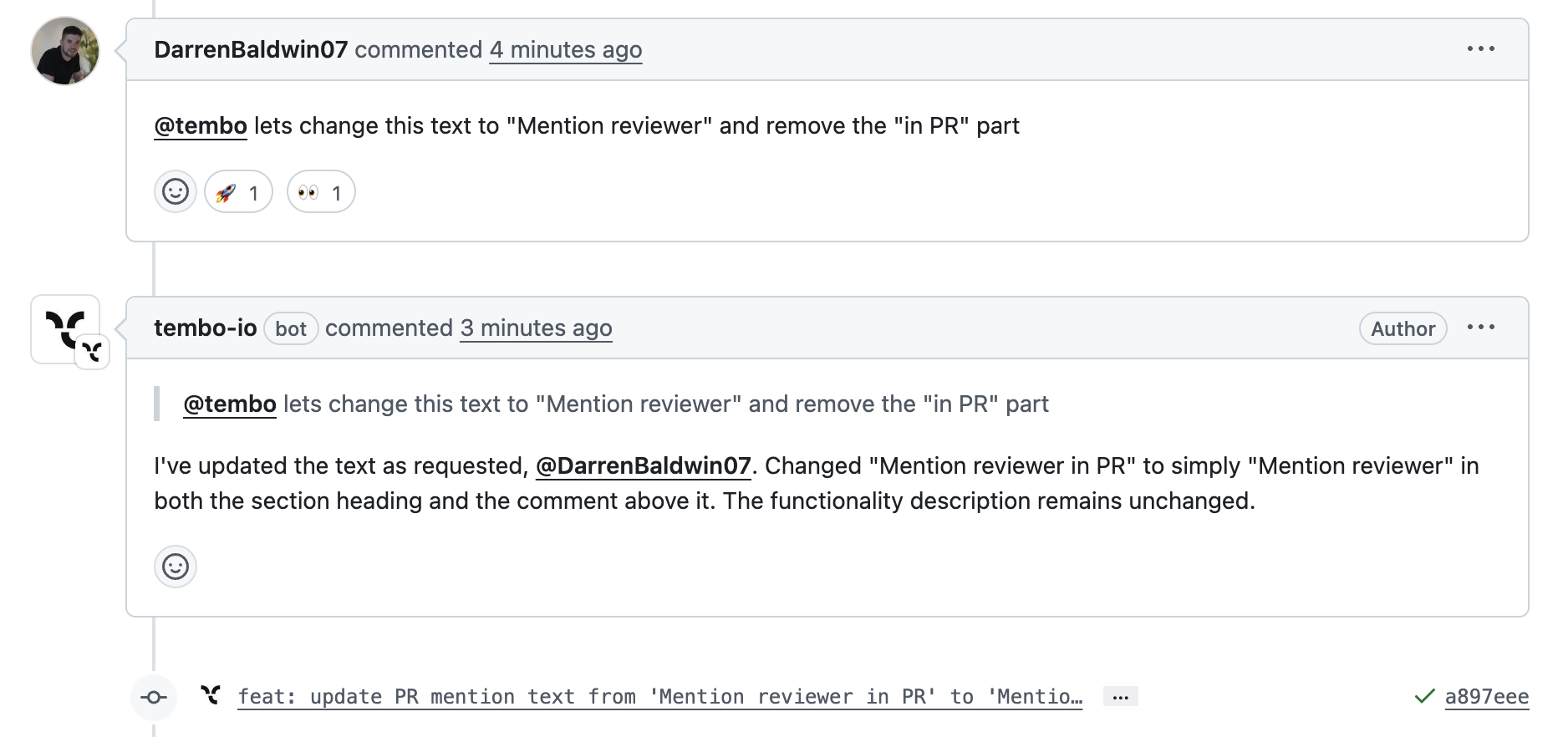
Prerequisites
The Feedback Loop works automatically once you have:- GitHub integration enabled in your Tembo workspace
- At least one pull request created by Tembo (from error detection, manual assignment, etc.)
How it works
- Initial Solution - Tembo creates a pull request to solve an issue
- Review & Comment - You review the PR and leave feedback (tag @tembo in your GitHub review or comments)
- Automatic Retry - Tembo processes your feedback and updates the PR with improvements
- Iteration - Continue providing feedback until you’re satisfied with the solution
Credit Usage: Processing feedback through the Feedback Loop consumes credits based on the complexity of the requested changes and the size of the codebase context. Each feedback iteration is treated as a separate task. Learn more about credit consumption.
Providing Feedback
Option 1: Use GitHub’s PR Review function

- Submit a formal PR review using GitHub’s built-in review feature
- Tag “@tembo” in your review summary or in any specific comments you want Tembo to act on (untagged feedback is ignored)
- Advantages:
- Tembo knows exactly which lines you’re commenting on for precise fixes
- You can batch multiple feedback points in a single review
- Cleaner conversation thread with organized feedback
- Standard GitHub workflow that integrates with your team’s process
Option 2: Add comments
- Leave regular comments in the PR conversation
- You must mention “@tembo” in the comment to trigger processing (untagged comments are ignored)

Example Workflow
Here’s how a typical feedback loop works in practice:Step 1: Tembo Creates Initial PR
Tembo detects a Sentry error about unhandled database timeouts and creates a PR with a basic try-catch solution.Step 2: You Provide Feedback via GitHub Review
Using GitHub’s review feature, you add multiple comments:- Line 15: “Add retry logic with exponential backoff”
- Line 22: “Log the timeout duration for monitoring”
- Line 30: “Consider connection pooling optimization”
- General comment: “Add unit tests for the timeout scenarios”
Step 3: Tembo Updates the PR
Tembo processes all feedback points together and pushes a new commit that:- Implements retry logic with exponential backoff
- Adds comprehensive logging with timeout metrics
- Optimizes connection pooling configuration
- Includes unit tests covering timeout edge cases
Step 4: Continue Iterating
If you need further refinements, simply add another review or comment with “@tembo” and the cycle continues.What to Expect
Response Time:- Tembo typically acknowledges feedback within 1-2 minutes (👀 reaction)
- Processing and implementing changes usually takes 3-10 minutes depending on complexity
- You’ll see new commits appear in the PR once changes are complete
- 👀 = Tembo has seen your feedback and is analyzing it
- 🚀 = Tembo is actively working on implementing changes
- New commits = Changes are complete and ready for your review
Best Practices
Writing Effective Feedback
✅ Be specific and actionable:- Add multiple comments to different lines in one GitHub review
- Tag “@tembo” on the review summary or individual comments you want addressed; Tembo processes all tagged points together for cohesive improvements
- Cleaner conversation thread and better context awareness
- Tembo only acts on PR feedback that mentions “@tembo” (in reviews or regular comments)
- This prevents accidental triggers from internal team discussions or other bot messages
What Tembo’s Feedback Loop Handles Well
- Code improvements: Performance, error handling, refactoring, type safety
- Testing and documentation: Unit tests, code comments, README updates
- Security and bugs: Vulnerability fixes, edge cases, error handling
- Alignment: Changes that follow your existing code patterns
Limitations
- Complex architectural changes may need multiple iterations
- Very large-scope changes are better as separate issues
- Works best on code within the current PR scope
You are responsible for all merged code. Read our AI First Software Development guide for more information.